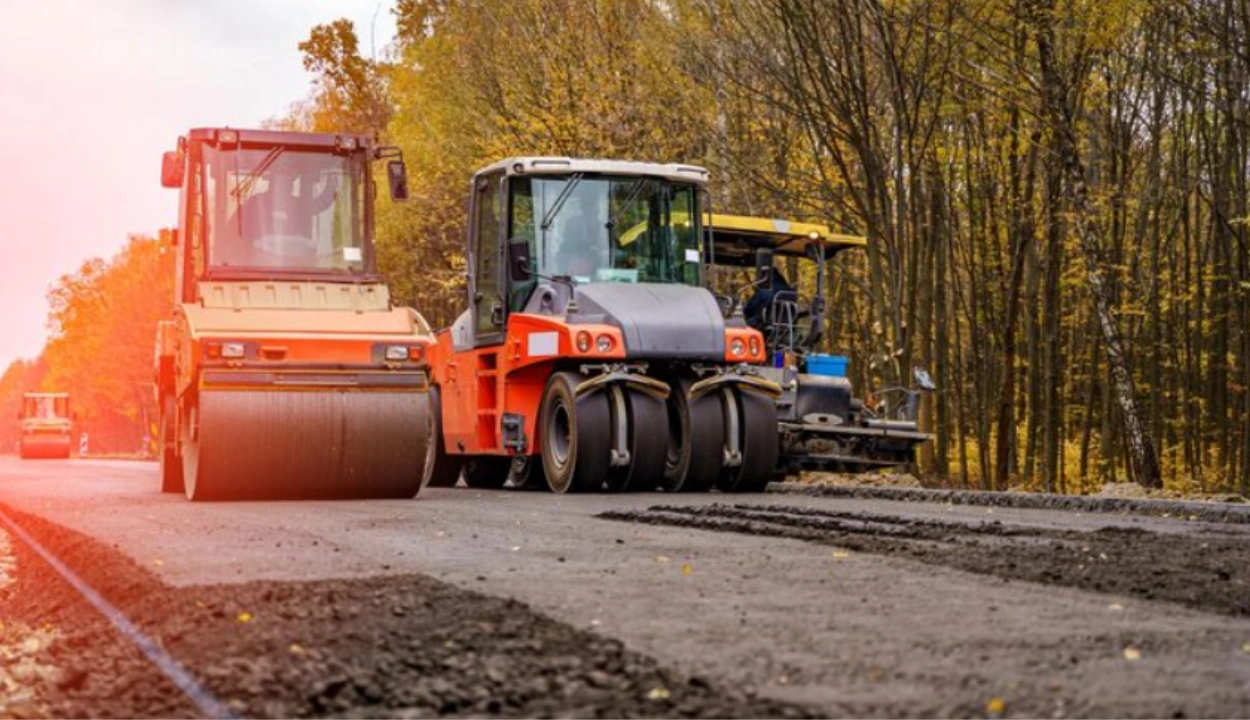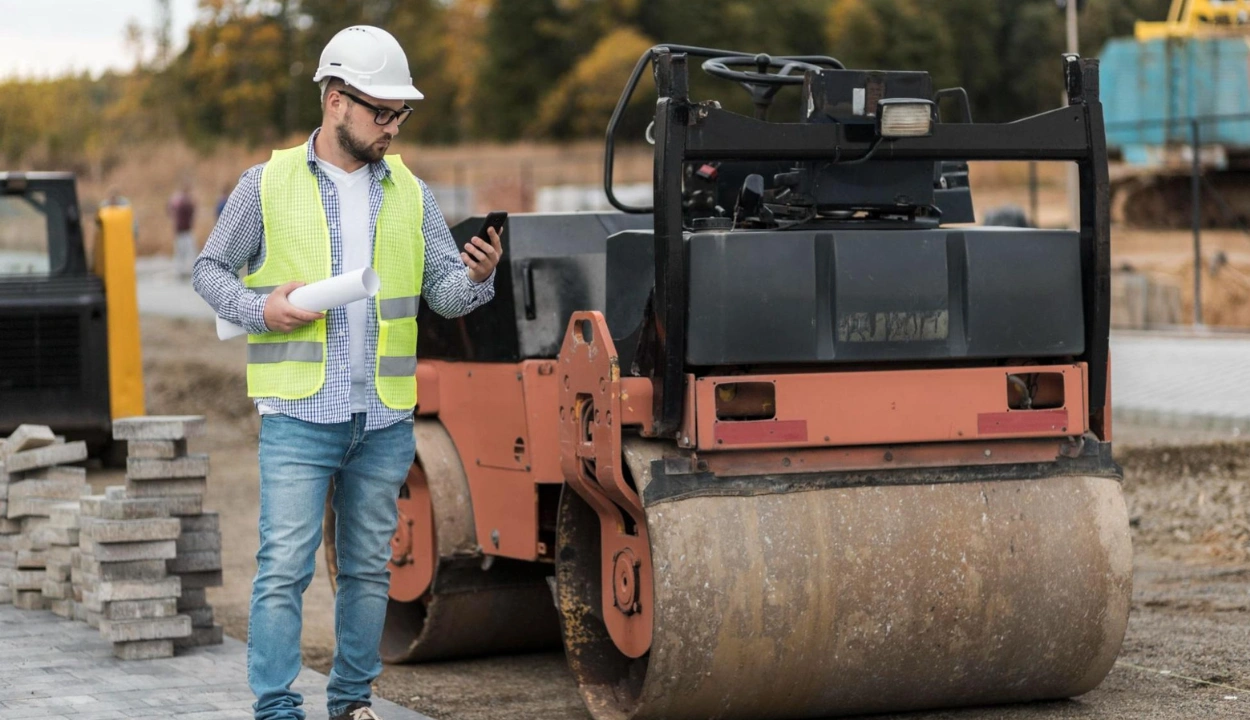How Equipment Configuration Management Works For Construction Sites?
In today's construction industry, staying organized is key. Configuration management helps keep track of every change to your project, ensuring things run smoothly from start to finish. This article will guide you through what configuration management is and why it's essential.
That’s because even if you don’t, most of your competitors are using technology to automate their processes and stay ahead of the curve.
This paradigm shift indicates the importance of technology to sustain and thrive in this competitive and ever-expanding market.
One such instance is the use of equipment configuration management to ensure the extended up-time for construction assets and equipment in the field.
What is Equipment Configuration Management?

Equipment configuration management is a systematic engineering approach to maintain and optimize equipment performance throughout its lifecycle.
It involves tracking changes to both internal systems and external components, using version control, baselines, and impact analysis to ensure that modifications don't adversely affect functionality.
This approach also incorporates compliance with standards and creates audit trails, providing a robust framework for managing equipment to prevent critical failures on job sites.
This can include but is not limited to:
- Physical Health
- Technical Specifications
- Hardware or Physical components
- Software Versions
- Configuration Settings
- Maintenance History
Simply put, equipment configuration management focuses on boosting productivity by making sure that the construction equipment including computer hardware and software is present at the required location – in the required condition– at every possible time.
How Does Equipment Configuration Management Work

- Optimizes Equipment Use: Tracking individual equipment characteristics like attachments, capacities, and tracking IT assets is made easier with the help of equipment configuration management. To maximize equipment use and minimize incompatibilities that might affect performance or safety, this allows for optimal assignment depending on project demands.
- Maintains Safety and Performance: The working conditions of construction machinery are often rather demanding. When done correctly, ECM ensures that equipment configurations are safe and according to manufacturer specifications. This reduces the possibility of mishaps, broken parts, and damage.
- Facilitates Maintenance and Repair: Maintenance and repairs are made more efficient with detailed configuration data. The precise configuration of the equipment can be immediately identified, and any required repair manuals or instructions for troubleshooting can be accessed.
- Version Control and Change Management: Construction projects often involve modifications to equipment configurations. ECM tracks these changes, ensuring everyone uses the latest version and preventing confusion. This is especially important for complex equipment with multiple settings or attachments.
- Tracks Compliance with Regulations: When it comes to emissions, noise levels, or safety features, certain construction equipment must adhere to certain laws. To ensure that configurations are up to code, ECM streamlines documents for inspections and helps verify compliance.
Benefits of Configuration Management
Some of the key benefits of Configuration Management include:
- Streamlined operations with better control and visibility due to a well-defined configuration procedure that includes tracking.
- Having an in-depth understanding of the configuration's components helps keep costs down by preventing needless repetition.
- With more agility as well as faster problem-solving, your construction business can provide better service to its clients.
- Better process and system dependability by identifying and fixing inaccurate configurations that might affect performance negatively.
- The capacity to establish and implement process-related formal rules and procedures that facilitate auditing and monitoring of process status.
- Streamlined process management of modifications that reduce the likelihood of equipment incompatibility and issues.
- Recovery time for your service is reduced if equipment breaks down.
Restoring the operational configuration is much simpler and faster if you are aware of the desired configuration state.
Risks of Not Using ECM
Organizations incur heavy costs in the form of intervention resource expenditures when configuration management is disregarded or executed improperly.
Compensation for quality and scheduling issues sometimes necessitates unanticipated outlays of time, money, and other resources.
Corrective action becomes the de facto "method of working" when scheduling and quality issues end up consuming an organization's entire operational energy.
Understanding the relationship between existing procedures and best practices, as well as the necessary cultural shift, is essential for making the necessary changes to that environment.
Automating Equipment Configuration Management in Construction
Being able to automate equipment configuration management with software assists a construction business in establishing and maintaining consistency, reliability, and proactive environment at scale.
Here's a step-by-step guide:
- Assess Current Processes: The initial step involves the evaluation of the current condition of equipment configuration procedures. Doing so helps in easily identifying any pain points, and bottlenecks along with areas for improvement via automation.
- Define Requirements: Specify your requirements such as the size of your equipment, the project complexity, regulatory compliance, and system integration for automating your equipment configuration management.
- Select Automation Tools: After determining your specific needs, analyze and choose the best automation technologies and software. Make sure it has tools for tracking equipment, creating configuration templates, scheduling maintenance, monitoring in real-time, and creating reports.
- Customize Configuration Templates: Create standard setup forms that can be used for various types of equipment and project settings. The parameters, settings, and specifications included in these templates should be customized to meet the needs of your project while also taking industry norms into account.
- Implement Tracking Systems: Get equipment tracking systems set up so you can keep tabs on usage, how well it performs, and when the equipment has been last serviced. Use radio frequency identification tags, barcodes, or GPS tracking devices for precise asset tracing.
- Integrate with Existing Systems: Automate as much of your construction management process as possible by integrating your tools with other PM software, asset-tracking platforms, and CMMS. Keep all systems communicating with one another and coordinating workflows without any issues.
- Monitor and Analyze Data: Keep an eye on the data the automation system collects from the equipment at all times. Determine where things can be optimized and improved by analyzing performance indicators, usage patterns, and maintenance records.
Why Choose Clue
In the high-pressure world of construction, equipment inconsistencies can bring projects to a screeching halt. Clue is your secret weapon for conquering equipment configuration chaos.
Our all-encompassing platform provides unparalleled control you need to optimize every machine. Our extensive feature set allows you to track your entire fleet in real time, offering clear visibility through real-time updates and issue tracking.
Plus, with Clue, users can find and address setup problems instantly, eliminating the need for guesswork. Immediate notifications allow for rapid remedial action, avoiding expensive downtime, thanks to direct reporting.
Simplified check-ins and check-outs through a user-friendly interface streamline accountability. The right configuration is applied for every project, maximizing uptime and minimizing errors. Drive peak performance from every machine with Clue!
Bottom line
To keep up with the constantly evolving construction industry, configuration management has undergone significant changes. This recent technological advancement allows configuration to be remotely deployed from anywhere in the world.
Choosing the right equipment along with maintaining computer systems for the work site is a critical component in ensuring the efficient and timely completion of a construction project.
A manager's understanding of the tasks at hand, the resources available to do them, the time and money needed, and, finally, the software needed to set up the equipment for usage plays a key role in the process.
That is why it is essential to employ top-of-the-line CM solutions, such as Clue, to ensure product consistency and functionality to remain reliable over its shelf life.
FAQs
1. What is an example of equipment configuration management in construction?
Let’s take the example of a crane which requires to be meticulously set up and maintained throughout the construction project. The role of equipment configuration in this case pertains to choosing an appropriate model and then configuring it as per the guidelines of the manufacturer.
The next step is to monitor it using automated systems for its performance. Moreover, configuration management also allows for regular maintenance and consistent adjustments to ensure the efficiency of the operation. This entire process not only optimizes equipment performance but also contributes the minimizing risks.
2. What are the five steps of the configuration management process?
The five steps of the configuration management process are as follows:
- Planning: Defines the scope of configuration management, establishes goals, and creates a strategy for managing equipment configuration throughout its life cycle.
- Identification: All configuration components (such as software, hardware or physical components, and documentation) are identified and documented, including their attributes and links.
- Control: Maintains control and prevents unauthorized modifications to configuration elements through procedures for baseline creation, version control, and change management.
- Status Accounting: Tracks and monitors changes to a software systems configuration metadata, their versions, modifications, and connections.
- Auditing/Verification: This step helps identify and resolve discrepancies and ensure the integrity of configuration items.
3. Who is responsible for configuration management?
Responsibility for configuration management typically lies with
- Project Managers
- Configuration Managers
- Engineering and QA Teams
- IT and Operations Teams
Transform Your Equipment Management













